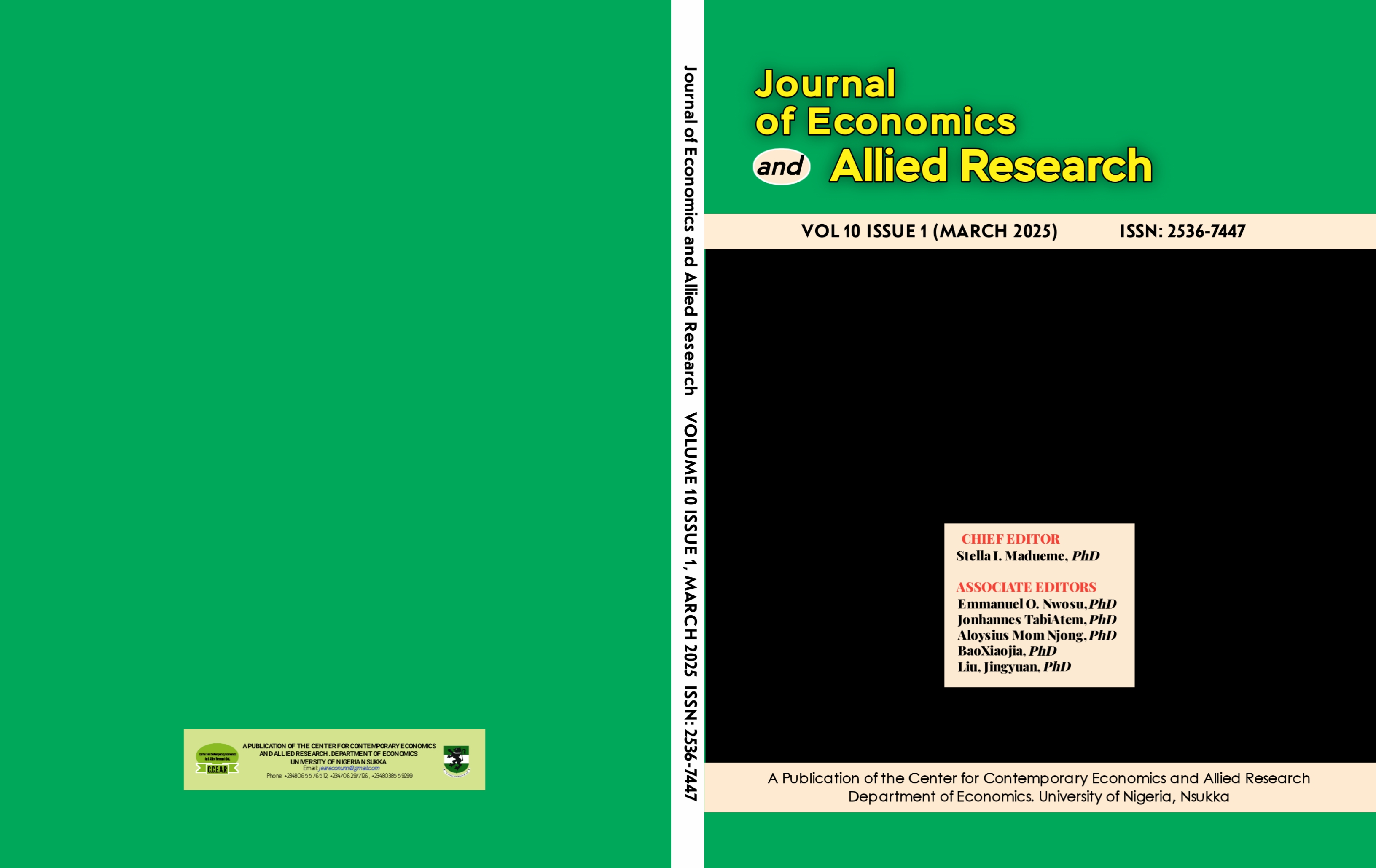AN OBJECTIVE APPRAISAL OF EDGEWORTH SERIES DISTRIBUTION AND NORMAL DISTRIBUTION FOR THREE POPULATIONS
Keywords:
Optimal probability, Edgewoth Series, Discrimination, Quadratic, discriminant analysisAbstract
The study evaluates the optimum probabilities of misclassification using the Edgeworth Series Distribution (ESD) and compares the misclassification errors of ESD with the Normal Distribution (ND) for three populations using simulated data. It equally examined the adequacy of distribution performance between ESD and ND techniques and evaluates the performance of LDA and QDA in classifying ESD averaged over various sample sizes for three distinct populations. The optimal probabilities of misclassification for the Edgeworth Series Distribution (ESD) were computed with specific parameters ( with 4 , 1 0 , 2 1 , 3 1 and 1 being the skewness factor) within defined intervals (0.00625, 0.4 being in 14 intervals). The study also examined the apparent probabilities of misclassification for ESD and ND when means ( 1 2 and 3 ) are known or estimated from samples.. The findings of the study also revealed that QDA tends to have higher accuracy and AUC-ROC values than LDA across all the skewed levels. The study concluded that QDA outperformed LDA in terms of accuracy and error rates, demonstrating superior discriminatory power. This study provides valuable insights for those working with datasets involving multiple populations and variables, with potential applications in various fields such as multivariate methods, data science, machine learning, business, healthcare, and finance. The research contributes to the advancement of robust classification methods and provides programming code for evaluation, enhancing the methodological toolkit in the field. It establishes a foundation for future research endeavours and presents a comprehensive framework for comparing LDA and QDA performance in ESD data, highlighting the effectiveness of QDA in handling skewed data for multiple populations. The research recommended further exploration into developing a generalized model for estimating probabilities of misclassification via ESD with flexible distribution assumptions and robust estimation methods



